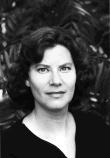In July of 2003, I found myself in the Central Highlands of Costa Rica, sequestered away with five other writers and artists in a small colony situated on a hill above the small town of Colon. I arrived in Costa Rica with little more than an idea for a novel, the first impressionistic strokes of an opening scene. As it turned out, my second-floor studio was too beautiful, the setting too sublime, my fellow colonists too interesting.
I ended up doing more walking and wandering than writing. I also took a few side trips, most notably to the small surfing town of Hermosa, where I rented a filthy room on the beach for twenty dollars a night. During the day I hung out on the beach, watching the surfers brave the spectacular waves. Nighttime was less pleasant. My room had bugs, my sheets were grimy, and the communal bathroom was a few hundred yards away up an unlighted staircase. One night a wild storm came through, soaking the bed and floor beneath my small, screened-in window. But the window looked out to the ocean, and it was a beautiful sight. I’d be staring out into darkness, the wind and rain whipping at my face, and suddenly a flash of white lightning would rip through the sky, transforming day into night, illuminating the wild gray water.
Well, you see now, as I sit here writing this, I’m getting all worked up by the surfers, and the beach, and dirty room, and the storm. And that’s just what happened a few months after I returned home to San Francisco from the writers’ colony. There I was, typing away in my fog-bound house, having arrived at a point in the novel where I didn’t know where to go, or how to get there, or how to get myself out of the mess I’d made, and, quite without intent, I found myself writing about Costa Rica.
The novel that I was trying, and failing, to figure out during that month in Central America finally made its way into the world in 2007. Since then, many readers have asked me if I went to Costa Rica to conduct research for The Year of Fog. In fact, I went to Costa Rica to write a novel about San Francisco. And I did, in the end, write a novel about San Francisco, which happened to take a pretty lengthy detour to Costa Rica. I file this in the Happy Accidents drawer of my writing life. Truth be told, some of my most rewarding research didn’t feel like research at the time I was experiencing it; it just felt like life.
Take, for example, a bus ride through China a decade ago. I was in China for a couple of months on business, but ended up doing a lot of solo traveling. As my bus limped into Xian, I found myself talking to a Chinese geologist who was very concerned about the construction of the Three Gorges Dam. Several months later, at home in New York City, I began writing a novel set on the Yangtze River, against the backdrop of the Three Gorges Dam. Dream of the Blue Room would never have come into being had I not found myself alone in China, eyes and ears open.
Not all of my research has been quite so unplanned. Ellie Enderlin, the narrator of my third novel, No One You Know, is a coffee buyer. When I was choosing her occupation, my reasons were not purely literary. I happen to love coffee. I mean, really love it, with a deep and sometimes irrational passion. In the interests of verisimilitude, naturally, I had to drink vast quantities of the stuff and hang out at the best Bay Area coffee houses. My research also involved visiting a coffee warehouse in South City, participating in a cupping, perusing William H. Ukers’ classic 1922 text The Story of Coffee (all 800 pages of it), and rereading my notes from a small coffee farm I visited in—yes, Costa Rica—several years before.
Perhaps I felt the need to balance the pleasure with pain, however, because my research for No One You Know was two-fold. While the narrator is a coffee buyer, her sister, Lila, who died twenty years before the novel opens, was a math prodigy. My love for coffee is matched only by my absolute fear and loathing for math. Apparently, it wasn’t punishment enough to make one of my characters be a mathematician, and a brilliant one at that. For some reason, I had to actually insert Lila’s old math notebook into the plot—a notebook filled to the brim with mathematical formulae. For a mind-boggling year I was knee-deep in math: biographies of Ramanujan and Erdos, explanations of Hilbert’s famous unsolved problems, brain-busting histories of infamous theorums. The upside to all of this is that, if you ask me to explain the Goldbach Conjecture, or why a doughnut is, topologically speaking, equivalent to a coffee mug, I can give you a pretty good answer.
Ideally, the research you do, whether accidental or intentional, will deeply inform your story, but it will feel as if it comes from the characters, not the author. Perhaps the most useful piece of advice I can give about research is something I heard from a fellow San Francisco writer a few months ago during a panel discussion, which he, in turn, had heard from another writer on another panel some years before. “Do a lot of research. Then put almost none of it in the book.”
This piece originally appeared in the May 2008 issue of the Glimmer Train newsletter Writers Ask.
![]() as well as two books on the craft of writing, has a terrific new post up on RedRoom, “Navigating Time in Fiction”.
as well as two books on the craft of writing, has a terrific new post up on RedRoom, “Navigating Time in Fiction”.![]() .
.